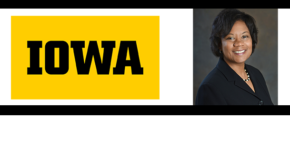 Adding new leadership can be challenging for organizations.
Adding new leadership can be challenging for organizations.
Michele Williams, associate professor of management and entrepreneurship at the University of Iowa, explores one reason why this might be.
Michele Williams, associate professor of management and entrepreneurship at the University of Iowa’s Tippie College of Business, conducts interdisciplinary research on the micro-foundations of collaboration and innovation with a focus on social identity. She received her Ph.D. from the University of Michigan’s Ross School of Business and has published in notable academic journals, such as Organization Science and the Journal of Applied Psychology. Dr. Williams speaks internationally on the topics of her research in academic and corporate settings.
Does Your Organization Suffer From ODID?
Does the organization you work for suffer from ODID, or Organizational Dissociative Identity Disorder?
Of course, such a disorder isn’t real. My co-author, Roger Mayer, and I borrowed the term from psychology, where Dissociative Identity Disorder is the diagnosis of a person with multiple personalities. Similarly, ODID describes an organization that seems to have multiple management personalities, where managers give inconsistent directives, contradict themselves, or fail to follow through.
When ODID happens, employees stop trusting the organization and doubt the ability, integrity, and often the fairness of management. This leads to lower employee engagement, less efficiency, and ultimately affects a business’s bottom line.
Our research shows organizations are most apt to show signs of ODID when going through a significant change, such as a merger or new leadership.
How can organizations avoid ODID?
Like anything else, communication is key. Management should communicate their changes openly and transparently from the beginning.
Also, start small. Springing big changes on staff suddenly and expecting them to adapt will likely lead to failure. Instead, solicit input from employees, during a limited rollout, then use sensemaking to combine these insights and findings and identify opportunities to fix unintended problems, before rolling out the strategy firmwide.
Finally, solicit feedback from employees. This demonstrates an organization’s sensitivity to the unintended consequences of the change and shows empathy with staff. These steps can maintain and strengthen trust in the organization by demonstrating the organization’s ability, benevolence and integrity.
